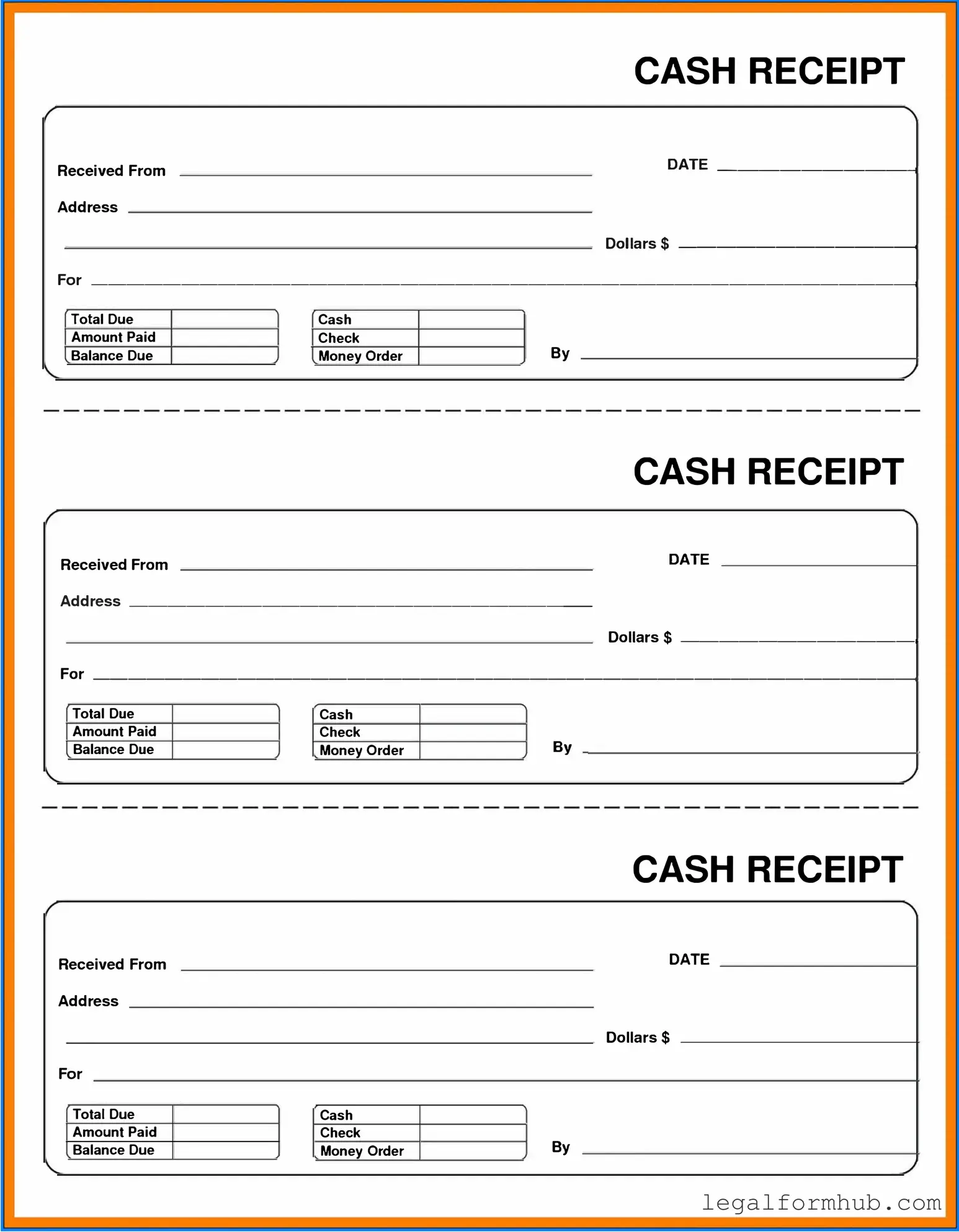The Cash Receipt form is similar to an Invoice in that both documents serve as proof of a transaction. An invoice is typically issued by a seller to request payment from a buyer, detailing the goods or services provided along with their prices. In contrast, a Cash Receipt acknowledges that payment has been received. While invoices can be outstanding, cash receipts confirm that the financial obligation has been settled, providing a clear record for both parties involved.
Another document akin to the Cash Receipt form is the Payment Voucher. A Payment Voucher is used to authorize payment and often includes details about the transaction, such as the amount and purpose. Like a Cash Receipt, it serves as a record of payment but is typically initiated by the payer rather than the recipient. Both documents help ensure accurate financial tracking and accountability within an organization.
The Deposit Slip is also similar to the Cash Receipt form. A Deposit Slip is used when funds are deposited into a bank account. It includes information such as the amount being deposited and the account number. While a Cash Receipt confirms that a payment has been made, a Deposit Slip provides a record of the funds being deposited, linking the transaction to the bank’s records.
Another related document is the Sales Receipt. This document is issued at the point of sale and serves as proof of purchase for the buyer. It includes details like the items purchased, the total amount paid, and payment method. Both the Sales Receipt and Cash Receipt confirm that a financial transaction has occurred, although the former is typically issued immediately at the time of sale, while the latter may be generated later.
The Credit Memo shares similarities with the Cash Receipt form as well. A Credit Memo is issued when a seller credits a buyer’s account, often due to a return or adjustment. While a Cash Receipt confirms payment, a Credit Memo indicates a reversal of that payment or a reduction in the amount owed. Both documents are essential for maintaining accurate financial records and ensuring that all transactions are accounted for.
If you are looking to obtain a Doctors Excuse Note to justify your absence, it's important to understand how these forms work within the larger context of documentation. Much like the financial documents we rely on, such as Cash Receipts or Payment Vouchers, the accuracy and legitimacy of a Doctors Excuse Note can be crucial for validating your situation. Should you need assistance in completing this important form, you can access the necessary tools at Fill PDF Forms.
Another document that resembles the Cash Receipt form is the Expense Report. An Expense Report is submitted by employees to document expenses incurred during business activities. It includes receipts and other documentation supporting the claimed expenses. Similar to a Cash Receipt, it serves as a record of financial transactions, but it focuses on expenditures rather than income.
Lastly, the Acknowledgment of Receipt is comparable to the Cash Receipt form. This document is used to confirm that goods or services have been received. It may not always involve a financial transaction, but it serves as proof that the recipient has accepted delivery. Both documents provide verification and accountability, ensuring that all parties are aware of what has transpired in the transaction.
